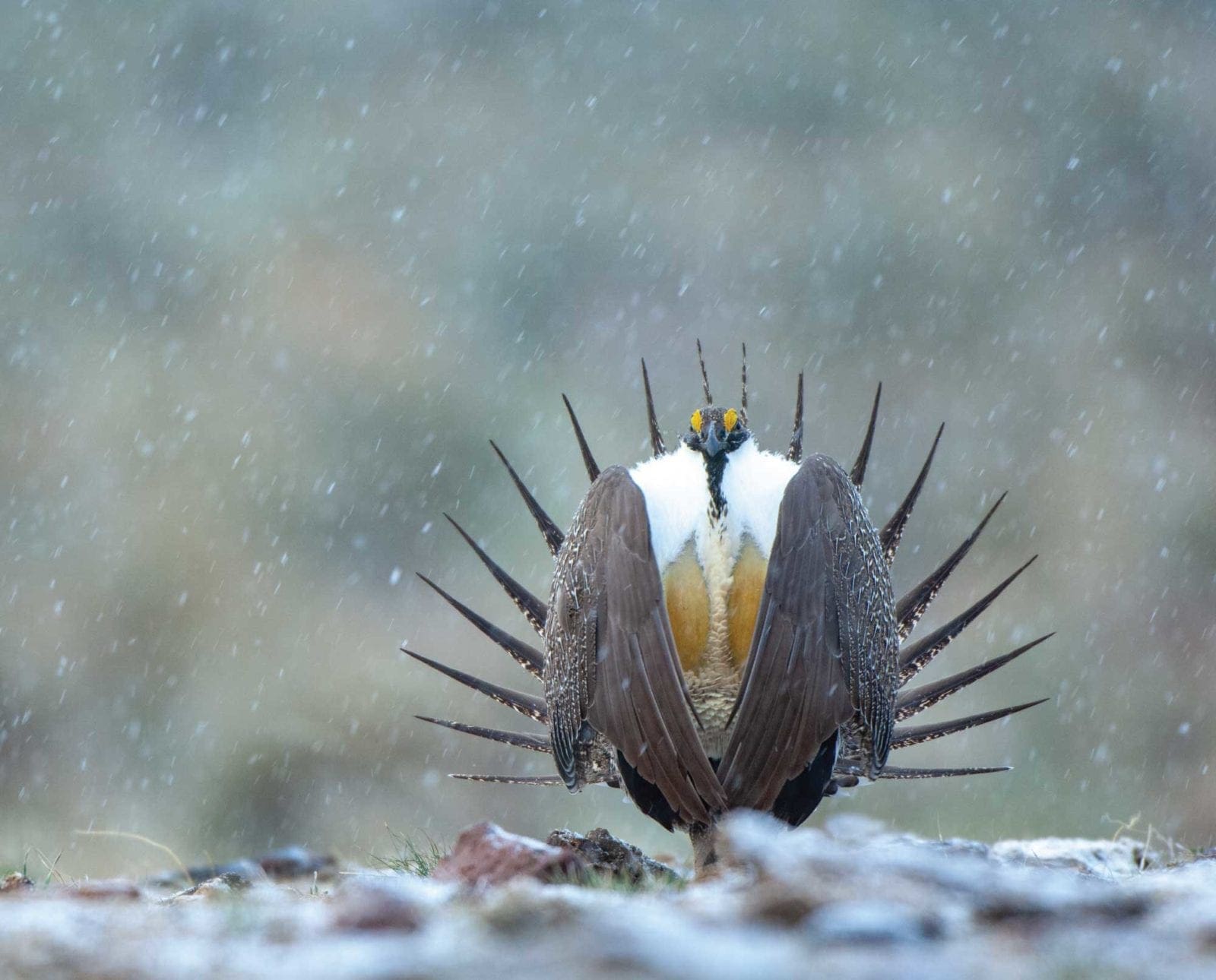Home » Conservation » The Fight for Sage Grouse with Backcountry Hunters and Anglers
The Fight for Sage Grouse with Backcountry Hunters and Anglers

Project Upland is an editorial initiative to capture the cultures…
The fight for sage grouse is one of the most critical battlegrounds for upland game species in North America.
Sage grouse have become ground zero for one of the most politicized debates surrounding an upland game species. As upland hunters, no matter our political affiliation, we all want sage grouse to be here on into the future for hunting opportunities. Their future is complex, ranging from issues of habitat to the energy industry and even migration.
Eukanuba Sporting Dog has pledged a $1 match for every $1 in ticket sales for the #PublicGrouse Virtual Film Tour up to $5000 to fight for the future of sage grouse on our public lands with Backcountry Hunters & Anglers (BHA). This initiative is imperative for protecting the ability of current and future sage grouse hunting opportunities.
Backcountry Hunters & Anglers Fight for Sage Grouse
Since BHA’s humble but ambitious beginnings around an Oregon campfire back in 2004, the coalition has been dedicated to the wild public lands, waters and wildlife that make sagebrush country a special place for sportsmen and women.
In 2015, the collective investment of the conservation community, federal and state management agencies, ranchers and other important stakeholders, including the energy industry, culminated in an unprecedented collaboration to tailor home-grown plans that advanced conservation in sagebrush country. These plans were specifically instigated to bring people together to address and reverse worrisome population declines of the greater sage-grouse. The U.S. Fish and Wildlife Service had previously listed the bird as “warranted but precluded” meaning that struggling population health for the grouse warranted actions administered under the Endangered Species Act (ESA) but were precluded from actually becoming listed for budgetary reasons and priority given to other species.
As the USFWS reevaluated this listing decision in 2015, these conservation plans and the robust collaboration involved in crafting them were foundational to their decision to deliver a “not warranted” listing decision, yet again averting the need for ESA action. A listing decision is bad business for all Westerners but especially so for ranchers, the energy industry and sportsmen and women. Yet these conservation plans continue to be unraveled. Compromising the integrity of conservation plans not only threatens sage grouse habitat, but creates greater uncertainty for big game populations like elk, pronghorn, mule deer and more than 350 other species that live in sagebrush country.
“BLM prohibited disturbance of more than 5 percent of the surface area of highest priority sage grouse habitat with activities like mining and energy development. But then conservation efforts hit a brick wall when a new administration came to power in 2017, promising industry jobs and fewer regulations. The BLM’s 5 percent surface disturbance limit was scrapped in 2018. The periodic population status review for sage grouse, information that would tell us if new conservation actions were being effective, was also postponed indefinitely. The machinery of wind farms, conventional oil and gas drilling, and their young cousin, fracking, has been allowed to grind ahead atop priority habitats except where court injunctions have thrown sand in the gears. There has even been legislation drafted to officially exempt sage grouse from the Endangered Species Act, essentially approving their extinction years before the last bird disappears. Unofficial estimates of sage grouse trends across nine states indicates on average a 44 percent decline since 2015.” (The Last Sage Grouse – Ben Deeble – Spring 2020 Issue of Project Upland Magazine)
While new resource management plans recently finalized eliminated protections for the grouse under “sagebrush focal areas” across designated priority habitat to enable mineral development that was previously withdrawn, U.S. District Court Judge, Lynn Winmill, intervened with an injunction that restores the strong conservation measures previously afforded by the collaborative 2015 plans. The ruling is good news for more than 51 million acres of sage grouse habitat in Idaho, Wyoming, Utah, Colorado, Nevada, California, and Oregon but has come short of creating certainty for the future.
In order to address deficiencies identified in the efforts to weaken sage-grouse conservation plans the Bureau of Land Management released six draft supplemental environmental impact statements (SEIS).
BHA is submitting comments on each of the plans to advocate for the continued implementation of the 2015 plans as originally envisioned. This not only respects the time and investment made by an impressive diversity of stakeholder interests, it gives us the best chance of keeping the bird off the list while maintaining the flexibility to compensate for new science and information that will continue to inform management models going forward.
The Administration had a tremendous opportunity to keep its promise to the West and build on the strength of the 2015 plans while making strategic adjustments in course that would have improved consistency and partnership with states. As a community of conservation minded hunters and public lands advocates, BHA is working with partners at all levels to demand that future management decisions be guided by science in the hands of biologists and sheltered from interference by politicians and outsiders motivated by special interests.
Project Upland is an editorial initiative to capture the cultures and traditions of upland bird hunting. We seek to inspire a future generation of upland bird hunters to understand the essence of hunting traditions and the critical cause for conservation.



